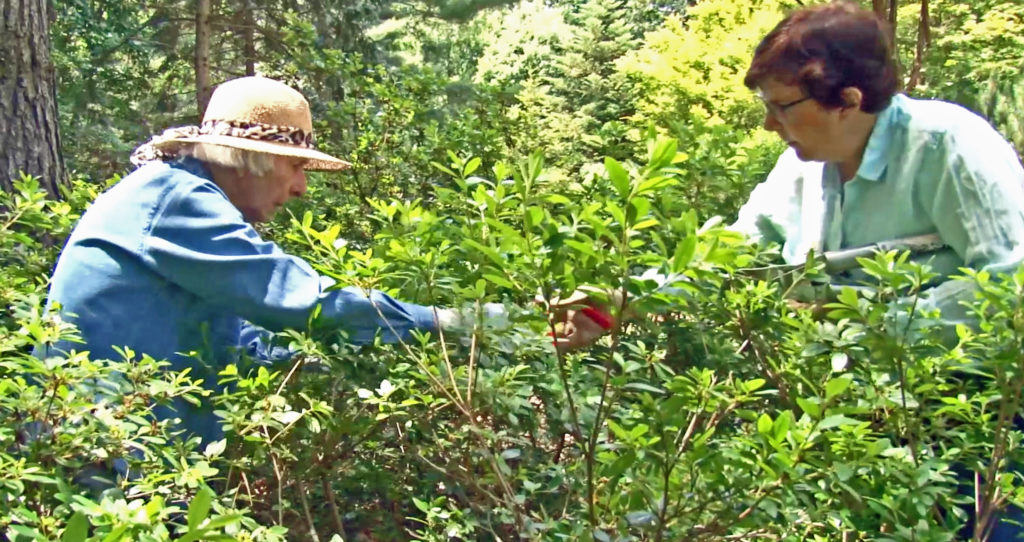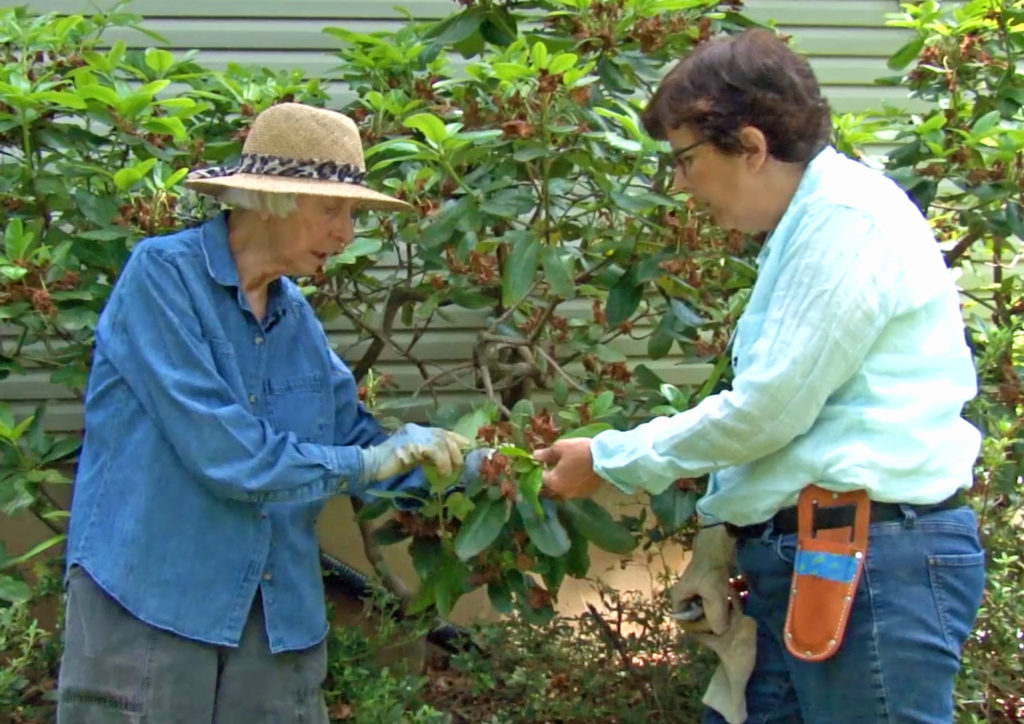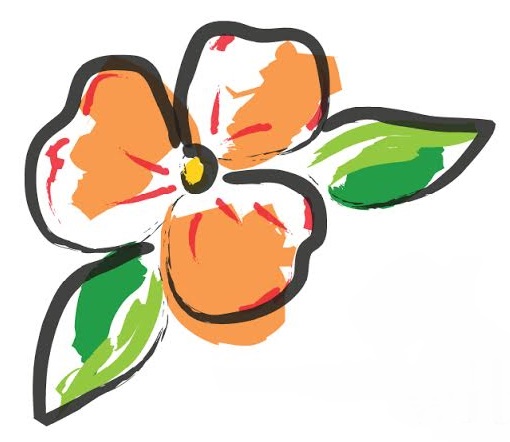
If you are lucky, you will have a mentor like I did.
I met Rose Norseth in 2014, when I first became a Master Gardener and she had already been one for many years.
She has an extraordinary knowledge of horticulture honed by working with horticulture hobbyists.
Rose makes gardening exciting, but she demands a lot too. If I mention a plant by its common name, she asks for its scientific name with the correct pronunciation. (I rarely know its scientific name, much less how to pronounce it. Learning both is one of my life goals.)
At one point, I rehearsed a presentation before Rose and Andrea, another knowledgeable Master Gardener. I did not know the meaning of the word “herbaceous” (a plant without a woody stem). They gently urged me to look it up before proceeding. I have never forgotten the definition or their advice.

A petite woman, Rose reminds me of my favorite grandmother. She has a direct, no-nonsense style, which she combines with an enthusiasm and warmth for people and plants. She shares her knowledge and passion for horticulture with unstinting generosity.
Here are a few of the many gardening tips that she shared with me over the years:
Check your garden every day. Rose walks through her garden every day. First to enjoy it, but secondly to check for insects, diseases, and damage from wildlife. She keeps her eyes open for trouble. By being vigilant, she solves problems before they get out of hand.
I did not follow her advice this winter. I went out to feed the birds only to find that deer had eaten the buds off my azaleas, Rhododendron. I had foolishly removed some netting for the winter. The azaleas paid the price.
Do not step directly on garden soil. Why? This compresses the soil, which makes it difficult for the soil to absorb or retain water. If soil is not compressed, seeds germinate better. Soil that has maintained its original structure, contains sufficient oxygen to enable plants and roots to properly grow.
If a garden is too wide to step from one side to the other without stepping in it, add steppingstones. Create a path that allows you to reach the plants in the garden without stepping on the soil directly.
The three D’s: dead, diseased, and damaged: remove the three D’s before you prune. Then, “stand back and look,” Rose admonishes everyone who plans on pruning a shrub or tree. Look after every cut. The fewer cuts, the better. Review books or online blogs to get detailed information on how to prune the specific species you are working on.
If branches rub or bend down (except for weeping trees), prune those as well. Remove one of the rubbing branches so that the tree’s bark does not become damaged. Rubbed bark can allow pests and diseases to enter the tree.
Magnolias, Magnolia grandiflora, and eastern red buds, Cercis canadensis, do not need pruning. Magnolias grow disastrous rain sprouts when pruned and they return forever. Trust me, my magnolia reminds me of my 30-year-old mistakes every day. Dogwoods, Cornus florida, can be sensitive to rain spouts as well.

American elm, Ulmus americana, should only be pruned in the dead of winter (late January or February) when it is very cold. When pruned at other times of the year, the sap attracts beetles. These beetles spread the fungi that causes Dutch elm disease, which is fatal. I have a six-year-old elm that has never been pruned.
Pruning is a science and an art that should not be undertaken wantonly.
For more of Rose’s pruning tips and demonstrations of how to prune azaleasand rhododendrons, Rhododendrons, go to her vodcasts on YouTube: https://youtube.com/playlist?list=PLJlPBZjt7ZuvbQu5rQHkaUVoiJ0sbnxtT
When in doubt, research. Rose quickly reaches for the books when she does not know an answer. One time, when we were choosing native trees for the local Finksburg Library garden, she called the legendary Dr. Michael Dirr for advice. Professor emeritus at the University of Georgia, Dirr has written many authoritative books on woody shrubs and trees.
Online resources offer a rich source of information. One such source is the Missouri Botanical Plant Finder at https://www.missouribotanicalgarden.org/plantfinder/plantfindersearch.aspx. Look for online sources that end in @edu for education or @ext for university extension services.
Rose has had a lasting influence on my knowledge of and passion for gardening.
While I have not always listened to her advice (my grandmother called me stubborn), I have remembered it. She warned me that my little fringe tree, Chionanthus virginicus, would grow up and shade the sunny garden that is currently beneath it. While it has not fulfilled that prophecy yet, its shady canopy stretches out a little farther every year.
She also questioned my choice of a weeping hemlock tree, Tsuga canadensis ‘Sargentii.’ (More specifically, she questioned the wisdom of planting any weeping tree.) She told me that I might rue the day I planted it, but I loved my little hemlock. Shortly after her comments, however, it died. A complete, swift, and catastrophic death.
My daughter’s weeping cherry tree, Prunus pendula, on the other hand, has chosen the slow swan song road to another life. Each year the oozing goo rises a little higher on the tree’s small trunk. Our goal is to witness as many more spring blooms as possible.
Someday, I will ask her about her aversion to weeping trees, but my own experience may be the answer.
My gardens share a touch of hers’. An ever-expanding colony of wild geraniums, Geranium maculatum, taken from a patch in her garden, grows underneath a dogwood in my front yard. They are the result of another rule from Rose: design does not have to be complex to be beautiful. The geraniums and the dogwood fill the little garden, no additional accents are necessary.
At 91, Rose has retired from being a Master Gardener this year. I have not seen her in a long time, but her passion and kindness will always be with me.

Laura
